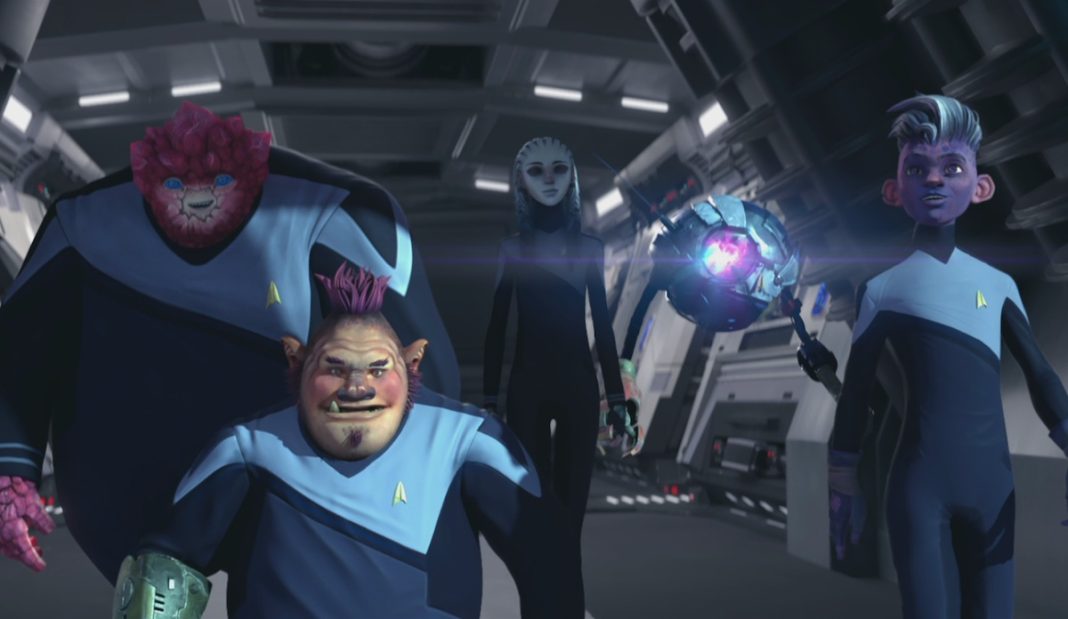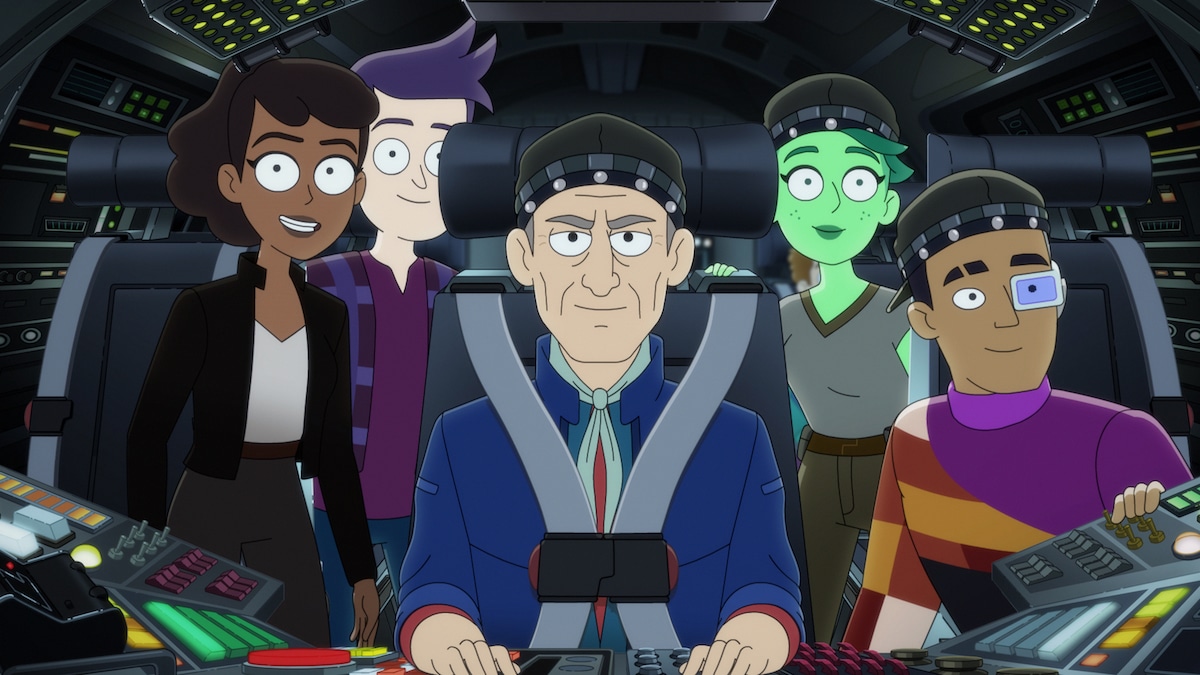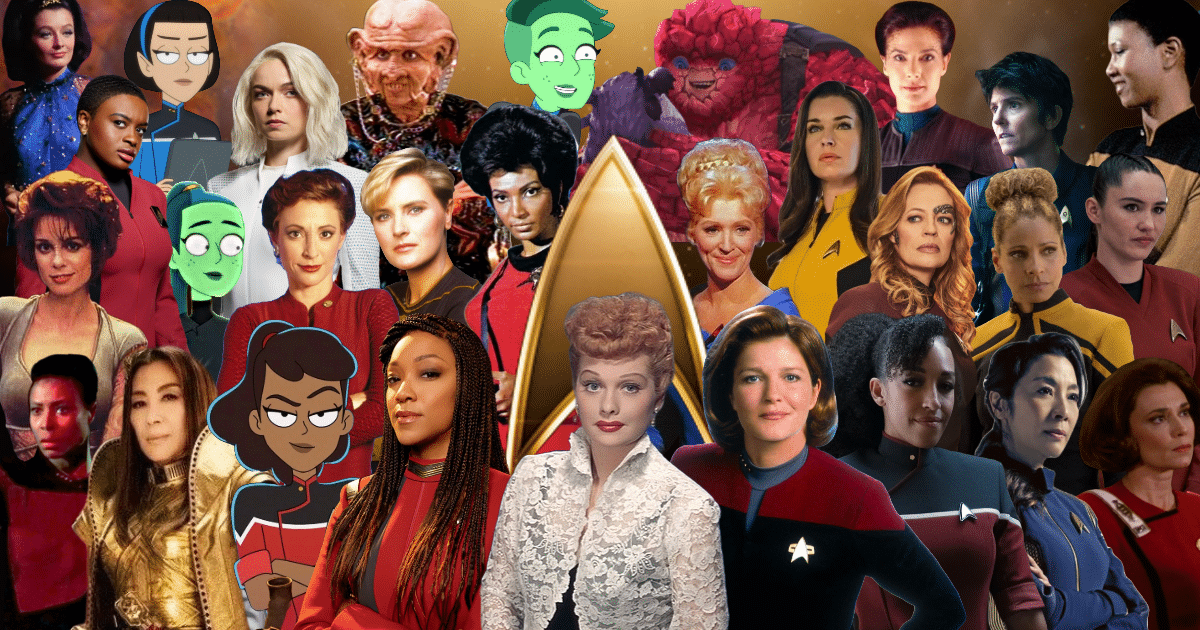While the article avoids spoilers, please be advised that Star Trek: Prodigy season 1 episodes 11 through 15 were watched for this review.
The back half of Star Trek: Prodigy season 1 sends the Protostar crew to new lengths as they attempt to gain admission to Starfleet.
The Charismatic Prodigy Crew
First and foremost, it’s worth noting right at the top that Prodigy succeeds as a piece of entertainment.
For one thing, the incredibly charming main cast of characters continues to shine. The crew is anchored by Captain Dal Re’l (Brett Gray), Gwyn (Ella Purnell), and Janeway(s) (Kate Mulgrew) and rounded out by Rok-Tahk (Rylee Alazraqui), Zero (Angus Imrie), Jankom Pog (Jason Mantzoukas), and Murf (Dee Bradley Baker). If you’ve watched the first half of the season, this cast has already won you over, and their excellent work continues in the back half.
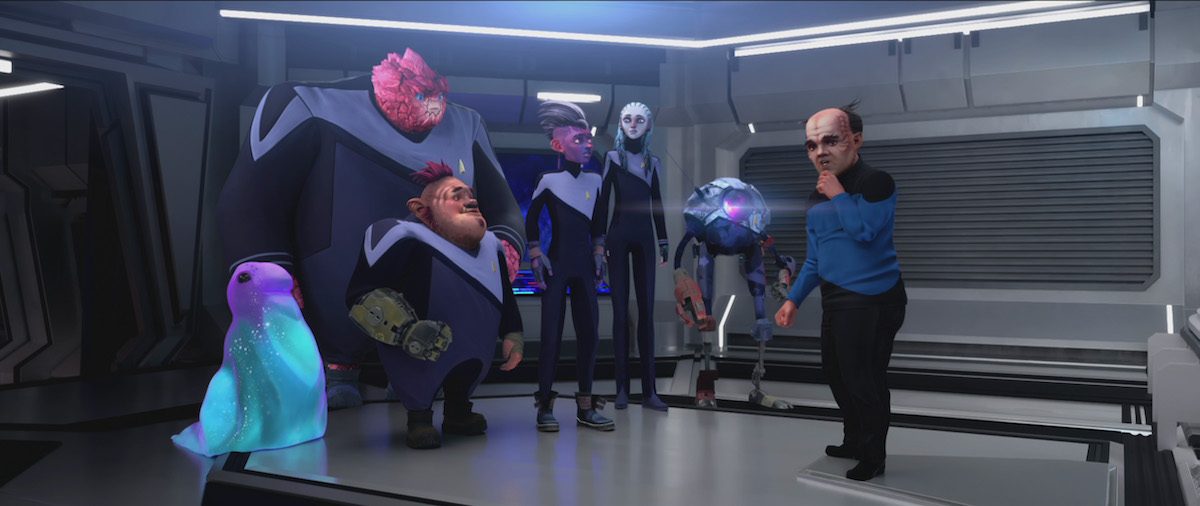
In addition, this half of the season adds additional characters, in the form of Vice Admiral Janeway’s command crew: Doctor Noum (Jason Alexander), Ensign Asencia (Jameela Jamil), and Commander Tysess (Daveed Diggs). These A-list actors are appropriate as the crew of the Dauntless under the command of the Admiral, and they each deliver on their inherent potential.
Beyond the excellent cast, this half-season of Prodigy is an extremely engaging Trek tale. In terms of entertainment, it delivers. Nevertheless, the most exciting aspects of Prodigy aren’t the stellar cast or engaging story, but the well-considered thematic work below the show’s surface.
The Next Generation
With more maturity and depth than some might expect for a kids’ show, the second half of Prodigy’s first season doesn’t pull punches. As the first Star Trek series specifically geared towards younger viewers, the show knows its target demographic is in for a hard tomorrow. And just like the show’s target demo, the heroes of Prodigy have been done dirty by the previous generation – even dirtier than they realized in the first ten episodes.
In the front half of the first season, Starfleet was presented as lodestar: the promise of the possibility of potential fulfilled for our cast of wayward protagonists. But in the second half of the season, that premise is challenged more deeply than one would expect.
Much in the way that Star Trek: Deep Space Nine took the seemingly perfect Federation of Star Trek: The Next Generation and complicated it, so too does the back half of Prodigy’s first season question the perfection of Trek’s idealized utopian system. This is often accomplished by showing the perspective of those who have been denied a seat at the table of Starfleet, with an emphasis on how those on the inside treat those without.
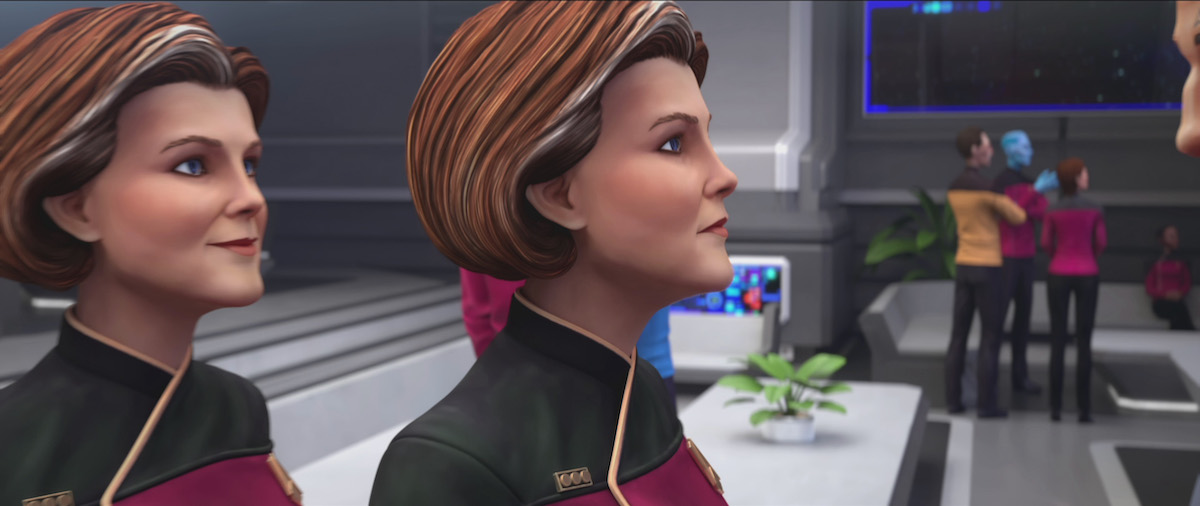
This idea is further complicated through the two Janeways. On the one hand, we have Hologram Janeway, who was introduced in the very first episode of the series and has provided guidance for the young crew of the Protostar, developing a particularly close relationship with Dal. This incarnation of Janeway is very near to the Janeway that viewers like me grew up with on Star Trek: Voyager, and she serves as an impeccable role model for the crew.
But on the other hand, we have Vice Admiral Janeway – the “real Janeway.” Being back from the Delta Quadrant for an extended period of time has had an effect on Janeway – at least a superficial one, if not one more profound (time will tell). By placing the idealized Hologram Janeway on one side of the conflict and the actual Janeway on the other, the show not only amps up the narrative tension in a clever way, it also taps into a rich vein for thematic excavation.
The Sci in SciFi
Finally, while every character has their own arc to unfold over the course of the back half of Prodigy’s first season, Rok-Tahk’s shines particularly bright. If you watched the first half of the season (which is required context for these episodes), you know that Rok is already on a journey to become a scientist.
These episodes of Prodigy emphasize that journey by ensuring that Rok is engaging with real science in virtually every episode. This means that young viewers will be exposed to real scientific terms and concepts, largely through the unassuming and entirely welcoming character of Rok-Tahk. Furthermore, in voice actor Alazraqui, Prodigy finds the perfect avenue for executing these scientific inclusions.
This certainly doesn’t mean that viewers will walk away from the show with a complete understanding of, say, meteorology or orbital mechanics. But it does mean that when those concepts (and terminology related to the same) are subsequently brought up in a classroom venue, they will already sound familiar, at least on some level or another.
Prodigy is committed to emphasizing the “science” in its “science fiction.” Learning has seldom been more fun.
Star Trek: Prodigy Season 1.5
Prodigy is an engaging adventure set in the Trek universe, and although it may be geared toward younger viewers, any audience member will find themselves swiftly wrapped up in the narrative.
Come exclusively for the legacy characters if you must – you’ll soon be won over by the Protostar crew one way or another. While the show may not have reached its first season finale, its already living up to its name.
The season 1 midseason debut of Star Trek: Prodigy is currently available for streaming on Paramount+, with new episodes released each Thursday.


